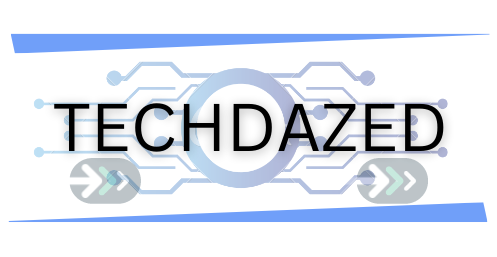Kanban, a lean project management tool that originated in the Japanese automotive industry, has now found its well-deserved place in software development and numerous other sectors. The term Kanban, literally meaning ‘visual card,’ presents a compelling system to manage work by balancing demands with available capacity and improving the handling of system-level bottlenecks. Today, Kanban is not only a system for visualizing work, limiting work-in-progress, and maximizing efficiency, but it also signifies a transformative approach to thinking about work and workflow. It’s not just about doing work; it’s about continually improving how the work is done.
What is Kanban Software?
The sphere of software development is an intricate domain characterized by high levels of dynamism and complexity. In such a context, the quest for effective project management methodologies becomes crucial. Emerging from the vortex of such a need is a lean management tool known as Kanban. Hailing from the production lines of Toyota in Japan, where it was conceptualized in the late 1940s, the term Kanban translates to ‘visual signal’ or ‘card.’ It was crafted with the aim to streamline production, increase efficiency, and minimize waste.
By the early 2000s, Kanban had found its way into software development, where it has been making waves ever since. As an agile framework, Kanban provides a lucid visual depiction of the entire work process. By decomposing elaborate projects into simpler tasks showcased on a Kanban board, it makes it possible to monitor progress, uncover blockages, and ensure a balanced distribution of work effectively. In this article, we’ll take a look at the 6 Advantages of Kanban in Software Development.
1. Visualization: The Cornerstone of Kanban
At the heart of Kanban is its focus on visualization. The Kanban board, physical or digital, offers an easy-to-understand, at-a-glance view of the project’s state. Tasks are neatly organized into columns, traditionally categorized as ‘To Do,’ ‘In Progress,’ and ‘Done.’ The visual format enables the team to quickly grasp the project status, understand the sequence of tasks, and prioritize work efficiently. The visual cues foster superior coordination, encourage open communication, reduce misunderstandings, and ensure everyone is on the same page.
2. Uninterrupted Delivery and Adaptability
Contrary to methodologies operating in rigid phases or time-bound sprints, Kanban champions a continuous delivery approach. This means that as long as the team’s work capacity isn’t overwhelmed, new tasks can be added to the backlog at any given point. This element of flexibility is especially beneficial in environments where project requirements may change frequently, or there is a need for regular updates and improvements.
Also read: Ways Technology Makes Us Smarter
3. Resource Optimization Through Work-In-Progress (WIP) Limits
In Kanban, there’s an emphasis on controlling the ‘Work in Progress’ through a mechanism called WIP limits. By limiting the number of tasks each team member or the whole team can tackle simultaneously, Kanban curbs the risk of overburdening and multitasking. This focused approach promotes better resource management, discourages task-switching, mitigates the risk of bottlenecks, and ultimately, leads to a surge in overall productivity.
Also read: A developer identified a major technical issue during a daily scrum. What should the team do?
4. Expedited Delivery Through Enhanced Responsiveness
One of Kanban’s notable strengths is its capacity to promptly detect and resolve any impending issues or obstacles. The visual format, complemented by WIP limits, ensures swift identification of bottlenecks. Quick issue resolution leads to an uninterrupted, speedy process flow, thereby reducing the cycle time. This results in faster delivery of software solutions, whether it’s new features or bug fixes, which consequently enhances customer satisfaction.
Also read: Discover the Power of the ATT Shift App: A Revolutionary Tool for Streamlined Productivity
5. Transparency and Accountability: Building Trust in Teams
Kanban inherently promotes a high level of transparency. Every card on the Kanban board represents a task, containing detailed information such as the nature of the task, the team member handling it, and its current status. This transparency fortifies accountability since everyone knows who is responsible for what, and the progress of each task is easily traceable. This open visibility also encourages collaboration, fosters trust, and nurtures a healthier, more harmonious work environment.
Also read: Applications of VPNs for Users
6. Embracing Continuous Improvement
Kanban extends beyond work management; it’s a tool for work improvement. It cultivates a culture of continuous improvement, often referred to as ‘Kaizen.’ By tracking performance metrics such as lead time (the time from task inception to completion) and cycle time (time taken to complete a task), teams can spot inefficiencies and continually refine their work processes. This focus on constant improvement makes Kanban an invaluable tool for sustained productivity and quality elevation.
Also read: The Advantages of Automation in Glass Manufacturing
Conclusion
In essence, Kanban is a comprehensive and powerful tool that has dramatically transformed the landscape of software development. Its unique features of visualization, adaptability, resource optimization, responsiveness, transparency, and continuous improvement empower teams to perform at their best and consistently deliver high-quality software. The most critical aspect, however, is the understanding that Kanban is more than just a physical or digital board – it’s a culture, a mindset. It’s about organizations evolving and adapting, striving for excellence, and boosting their productivity by focusing not only on ‘what’ they work on but ‘how’ they work. With Kanban, the possibilities for growth and enhancement in software development are endless, making it a truly invaluable asset for any forward-thinking team.

